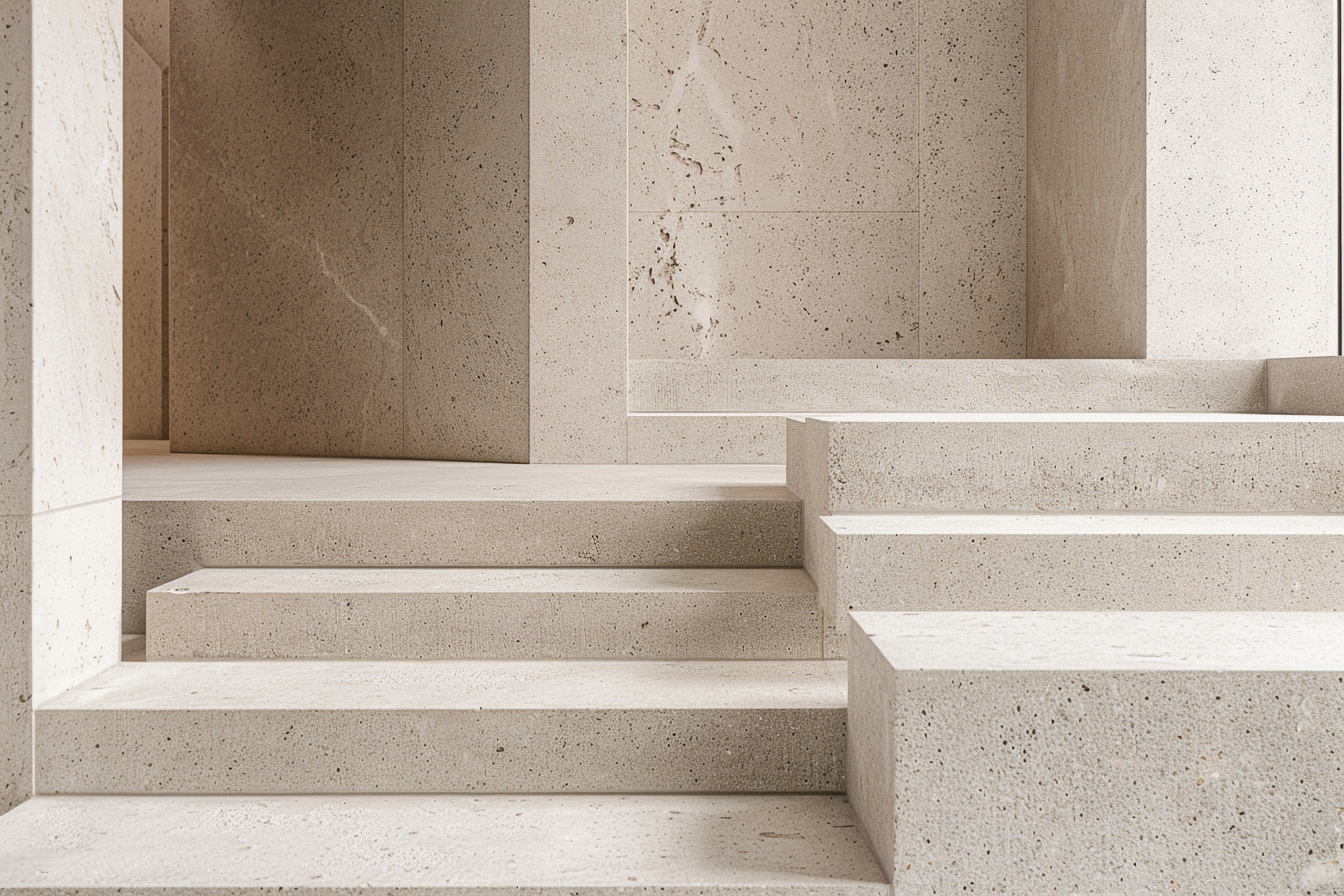Concrete in Architecture

1. Introduction
Concrete is one of the most versatile and widely used building materials in modern architecture. Its adaptability, durability, and structural performance have made it central to construction, from residential homes to monumental civic structures. Understanding concrete's properties, variations, and applications is essential for every architect entering the profession. For recent graduates, this knowledge bridges the gap between academic theory and professional application. It equips them to make informed decisions during the design and detailing process, ensuring their ideas translate effectively into built form. This article explores the fundamentals of concrete, its various types, material characteristics, and how it can be creatively and structurally integrated into architectural design. It also provides case studies that demonstrate the strategic use of concrete in exemplary buildings.
2. Material Composition and Properties of Concrete Concrete is a composite material composed of three primary ingredients: cement, aggregates (fine and coarse), and water. When mixed, these elements undergo a chemical reaction called hydration, which hardens the mixture into a rock-like mass.
Key Properties:
- Compressive Strength: Concrete excels in compression, typically ranging from 20 MPa to 50 MPa for most structures.
- Tensile Weakness: Its tensile strength is low, which is why it’s often paired with reinforcement.
- Durability: Resistant to weathering, fire, and chemical attack when properly mixed and cured.
- Workability: Influences how easily the concrete can be placed and finished.
Pro Tip: Always consider the slump test on site to assess concrete's workability before pouring.
3. Types of Concrete in Architectural Practice Architects and engineers employ different types of concrete depending on project needs, environmental conditions, and structural requirements.
3.1 Reinforced Concrete (RC)
Concrete combined with steel bars (rebar) to handle tensile forces.
- Common in slabs, beams, columns, and foundations.
3.2 Precast Concrete
Produced off-site and assembled on-site. Ideal for modular construction and high precision.
- Reduces construction time and on-site labor.
3.3 Lightweight Concrete
Uses lightweight aggregates (e.g., expanded clay) to reduce structural load.
- Suitable for roof decks and curtain walls.
3.4 High-Performance Concrete (HPC)
Designed for superior strength, durability, and low permeability.
- Often used in infrastructure and high-rise buildings.
3.5 Self-Compacting Concrete (SCC)
Flows under its own weight without needing vibration.
- Excellent for complex formworks.
4. Thermal and Environmental Performance Concrete plays a significant role in a building’s energy performance, especially through thermal mass — the ability to absorb and store heat energy.
Thermal Benefits:
- In hot climates: Delays heat gain during the day.
- In cold climates: Stores heat from internal sources or passive solar gains.
However, concrete has a high embodied energy, especially in cement production.
Mitigation Strategies:
- Use supplementary cementitious materials (SCMs) like fly ash and slag.
- Specify locally sourced aggregates.
- Employ carbon capture concrete technologies (emerging).
Pro Tip: Opt for exposed concrete surfaces in passive design schemes to leverage thermal mass.
5. Surface Finishes and Aesthetic Treatments Concrete’s appearance can vary dramatically depending on the finishing method, formwork, and additives.
Common Finishes:
- Board-formed Concrete: Leaves wood grain textures; ideal for brutalist or natural aesthetics.
- Polished Concrete: Sleek, reflective, suitable for interior floors.
- Bush-hammered or Sandblasted: For textured, rugged surfaces.
Color and Additives:
- Pigments can be added to achieve colored concrete.
- Aggregates exposed for decorative effect (exposed aggregate finish).
Pro Tip: Specify mockups on site to evaluate finish quality and texture before full-scale application.
6. Design Applications: Structural and Expressive Roles Concrete serves both structural and expressive architectural functions.
Structural Applications:
- Load-bearing walls, slabs, columns
- Long-span roof structures using shell or folded plate forms
Expressive Roles:
- Minimalist aesthetics (e.g., Tadao Ando’s smooth walls)
- Exposed concrete framing as an organizing element (e.g., brutalist design)
Case Study 1: Church of Light, Japan (Tadao Ando)
- Exposed in-situ cast concrete
- Minimal detailing
- Spiritual atmosphere created through interplay of solid and void
7. Contemporary Innovations and Sustainable Practices Modern advances in concrete address performance, environmental, and aesthetic goals.
Innovations:
- Ultra-High Performance Concrete (UHPC): Strengths up to 200 MPa
- 3D Printed Concrete: Enables freeform, automated construction
- Permeable Concrete: Reduces stormwater runoff in urban areas
Case Study 2: One Central Park, Sydney
- Uses precast concrete panels for rapid installation
- Integrates greenery and sustainability features
- Concrete frame supports cantilevered heliostat
Pro Tip: When using new concrete technologies, always verify supplier data sheets and test reports.
8. Conclusion Concrete remains a foundational material in architectural design, offering unmatched versatility in form, performance, and expression. For new professionals, understanding its material properties, various types, and appropriate design uses is essential for translating design intent into durable, efficient, and expressive architecture. Through strategic use of concrete — reinforced, precast, high-performance, or aesthetic — architects can create structures that respond to environmental demands, client expectations, and spatial aspirations. Mastery of this material is not just technical knowledge; it's a design opportunity.
References:
- Tadao Ando Architect & Associates. Church of Light. [https://ando-architecture.com]
- Frasers Property. One Central Park. [https://centralparksydney.com.au]
- American Concrete Institute (ACI) – ACI 318: Building Code Requirements for Structural Concrete
- Cement Sustainability Initiative, World Business Council for Sustainable Development
- Concrete Centre UK: [https://concretecentre.com]
- PCA – Portland Cement Association: [https://cement.org]